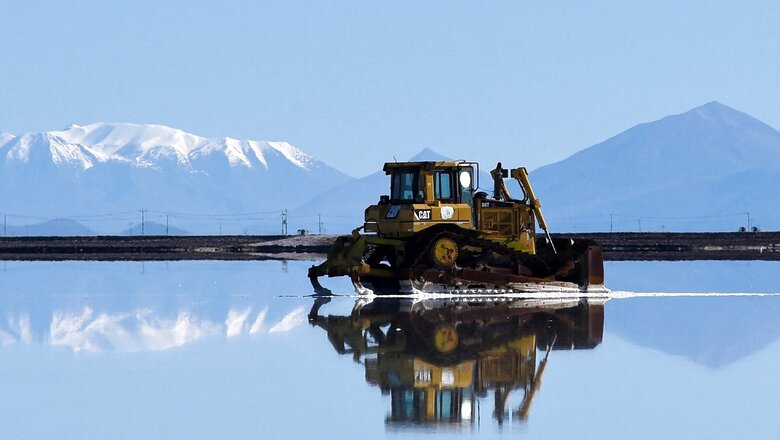
views
India’s latest discovery of 5.9 million tonnes of Lithium in Jammu and Kashmir can be a game-changer for India as it makes its big transition to electric vehicles. But it may still have to navigate several environmental challenges before it can get the potential mine up and running in one of the most ecologically-sensitive regions.
According to the Geological Survey of India, the potential site is an ‘inferred resource (G3)’ of Lithium, which means its quantity has been currently estimated with a ‘low level of confidence.’ Several stages of assessment would be required to determine its economic viability, vis-à-vis the environmental and social impact, as well as the technical feasibility.
“We still need to figure out how much of this estimated quantity can be commercially available? Global experience shows that feasibility tests, environment clearances and mine development can take up to ten years or more,” says Siddharth Goel, senior policy advisor at the International Institute for Sustainable Development (IISD). “We will also need a balanced and detailed analysis on the ecological sensitivities of the region.”
Local communities in various Lithium-rich countries such as Argentina have taken to the streets against the degrading impact of lithium mining. Not only is the mining process extremely water-intensive, it also contaminates the landscape and the water supplies if not done in a sustainable method. In the case of India, the risks are more since the potential reserve lies in the ecologically-sensitive Himalayan region which is already prone to natural disasters, which have increased both in frequency and scale in recent years.
Sustainability and impact on local communities remains a key concern especially when impacts of climate change have worsened. According to experts, a detailed independent environmental assessment is also important as increased scrutiny has now pushed global institutions to be mindful of the climate impact of proposed projects before making any investment.
Nonetheless, the latest estimate does put India in the big league of five nations — Chile, Australia, Argentina, China and the US — with the biggest Lithium reserves. If this resource can be extracted, it can place India in a very strong position not only in terms of green future, but energy security.
“EVs are the future. So, even if it takes up to five years to access this reserve, it still gives significant bargaining power to India in the global market. It is just how we use it,” says Pawan Mulukutla, Director – Integrated Transport, Electric Mobility & Hydrogen at World Resources Institute (WRI). “Lithium also offers a high recycling potential, which could be extremely significant for a big vehicle market like India.”
In the short-term, India is already developing strategy to source critical minerals to meet its goals of 30% electric vehicles by 2030. “The country is already looking at multiple solutions to meet this growing demand. There is increased focus on alternative fuels, new chemistries, domestic manufacturing, new PLI schemes while looking for new Li sources at the same time,” he adds.
According to Charith Konda, Energy Analyst from IEEFA, India will also need to develop in-house battery-grade Lithium refining capacity, which is critical to capture value in the supply chain since China currently controls more than 60% of the Lithium refining capacity globally. “But a major challenge is to develop a good exploration and production policy that allows the extraction and sale of these minerals in a commercially-viable, and sustainable manner.”
Read all the Latest India News here


















Comments
0 comment